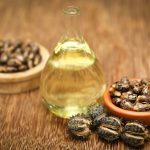
Sage is a herb traditionally used as stuffing for all sorts of meats but pork and lamb are probably the most popular in Western cuisine. Sage does however have some fascinating properties. Sage oil for example is a good antimicrobial and has often been used to treat infections in the herbal sense.
The scientific name for sage is Salvia officianalis L. It is a plant in the Labiatae or Lamiaceae family. The plant is native to the Middle East and Mediterranean regions. The plant is now grown throughout the world. The plant has traditionally been used for the treatment of all sorts of disorders.
Componentry In Sage
The leaves of sage contain a range of terpenes which all contribute to flavour. There are a number of compounds including carnosol, rosmanol and rosmadial, Some of these are found in rosemary extracts.
The compounds found in sage but not in rosemary are diterpene compounds such as methyl carnosate, 9‐ethylrosmanol ether, epirosmanol, isorosmanol, and galdosol.
Aqueous and polar extracts of sage leaf have strong antioxidant activity (Orhan et al., 2007). All the compounds mentioned are capable of scavenging free-radicals and especially the superoxide anions when lipids and fatty acids are oxidised.
Benefits Of Sage In Managing Diabetes
Type 2 diabetes is a chronic condition which leads to an inability to control blood sugar levels properly. When these levels become too high and if left untreated, then serious health risks follow. In some cases if left untreated, gangrene and death are the likely consequences.
The reason for this unpleasant condition is because either the body does not produce enough insulin or the cells in the body simply stop reacting properly to it.
Insulin is a hormone which regulates blood glucose levels. Poor insulin production or resistance to this hormone means that blood sugar levels remain unchecked. This in time leads to severe complications. Death can be due to heart disease, stroke and in some cases heart attack.
The drug most frequently used is metformin but natural alternatives are always being sought.
Making changes to the diet and in some instances taking supplements often helps. One herb that should be included in the diet is sage. It is easy to grow in most warm climates. As well as being a flavour a number of studies reveal its potential in controlling diabetes or at least managing it better. A number of animal and human studies revealed an association between the herb and reducing blood sugar and the findings we report here were initially uncovered in those animal studies.
One study looked at 40 participants with high cholesterol and diabetes. They took a sage leaf extract for three months (Kianbakht & Dabaghian, 2013). On completion of the trial, the participants had lower fasting glucose levels and lower on average glucose levels over that three month period. They also enjoyed a lower cholesterol level, general fat (measured as total triglycerides) in their blood and a reduction in cholesterol levels. Cholesterol incidentally is the harmful waxy substance that clogs up arteries and is associated with cardiovascular disease.
One study with 80 participants with badly controlled diabetes was statistically controlled in a double-blind clinical trial. This trial showed that sage consumption produced a positive benefit on blood sugar levels. After two hours of fasting, the blood sugar levels in those individuals receiving the sage significantly dropped when compared to the control (placebo) group.
Investigations at the molecular level are beginning to reveal how sage might be working. In one instance, a sage extract reduced blood glucose levels in rats with type 1 diabetes. This is the condition where the pancreas no longer produces insulin. The researchers were able to activate a particular type of receptor which helped in the clearance of excess fatty acids from the blood as well as improving insulin sensitivity.
A mouse study where they had type 2 diabetes showed that a sage tea they were given behaved like the drug metformin which is usually prescribed to help in the management of blood glucose levels in people.
Products
We are an Amazon Associate. Please note we have links to affiliate marketing partners. Please read our affiliate disclosure.
References
Kianbakht, S., & Dabaghian, F. H. (2013). Improved glycemic control and lipid profile in hyperlipidemic type 2 diabetic patients consuming Salvia officinalis L. leaf extract: a randomized placebo. Controlled clinical trial. Complementary Therapies In Medicine, 21(5), pp. 441-446 (Article)
, , , , , , , , . (2007) Antioxidant and anticholinesterase evaluation of selected Turkish Salvia species. Food Chem. 103(4) pp. 1247–54 (Article). .


Leave a Reply